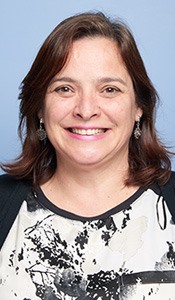Program Information
Harmonizing PET/CT Quantification in Multicenter Studies: A Case Study
A Marques da Silva*, A Fischer , PUCRS, Porto Alegre, RS, Brazil
Presentations
WE-AB-204-5 (Wednesday, July 15, 2015) 7:30 AM - 9:30 AM Room: 204
Purpose:To present the implementation of a strategy to harmonize FDG PET/CT quantification (SUV), performed with different scanner models and manufacturers.
Methods:The strategy was based on Boellaard (2011) and EARL FDG-PET/CT accreditation program, that propose quality control measurements for harmonizing scanner performance. A NEMA IEC Body phantom study was performed using four different devices: PHP-1 (Gemini TF Base, Philips); PHP-2 (Gemini GXL, Philips); GEH (Discovery 600, General Electric); SMS (Biograph Hi-Rez 16, Siemens). The SUV Recovery Coefficient (RC) was calculated using the clinical protocol and other clinically relevant reconstruction parameters. The most appropriate reconstruction parameters (MARP) for SUV harmonization, in each scanner, are those which achieve EARL harmonizing standards. They were identified using the lowest root mean square errors (RMSE). To evaluate the strategy's effectiveness, the Maximum Differences (MD) between the clinical and MARP RC values were calculated.
Results:The reconstructions parameters that obtained the lowest RMSE are: FBP 5mm (PHP-1); LOR-RAMLA 2i0.008l (PHP-2); VuePointHD 2i32s10mm (GEH); and FORE+OSEM 4i8s6mm (SMS). Thus, to ensure that quantitative PET image measurements are interchangeable between these sites, images must be reconstructed with the above-mentioned parameters. Although, a decoupling between the best image for PET/CT qualitative analysis and the best image for quantification studies was observed. The MD showed that the strategy was effective in reducing the variability of SUV quantification for small structures (<17mm).
Conclusion:The harmonization strategy of the SUV quantification implemented with these devices was effective in reducing the variability of small structures quantification, minimizing the inter-scanner and inter-institution differences in quantification. However, it is essential that, in addition to the harmonization of quantification, the standardization of the methodology of patient preparation must be maintained, in order to minimize the SUV variability due to biological factors.
Funding Support, Disclosures, and Conflict of Interest: Finnancial support by CAPES
Contact Email:


